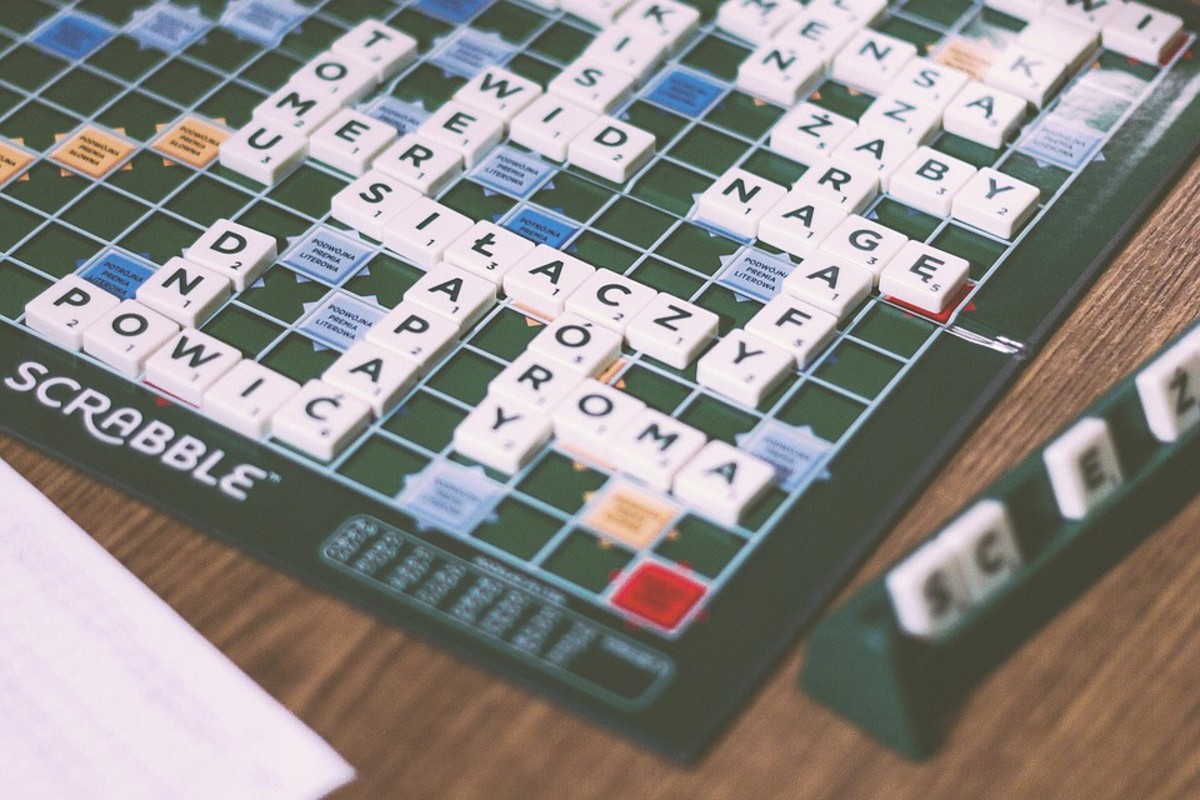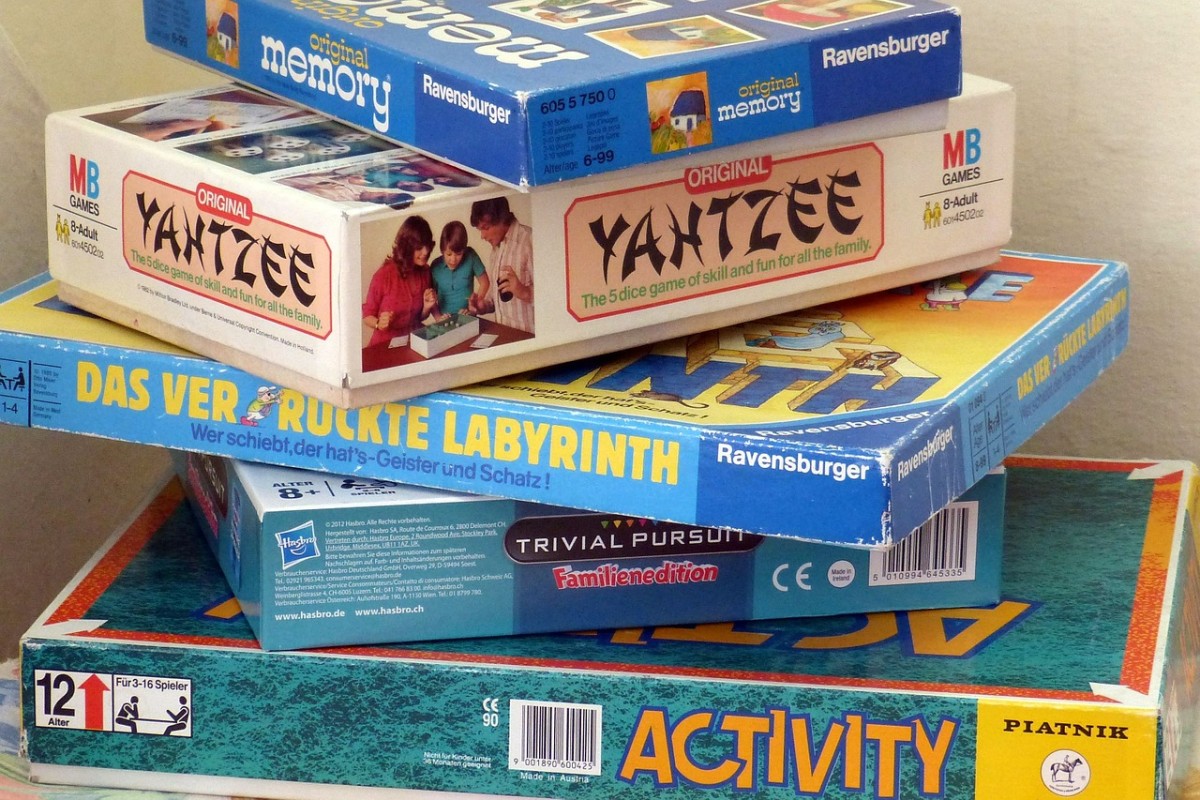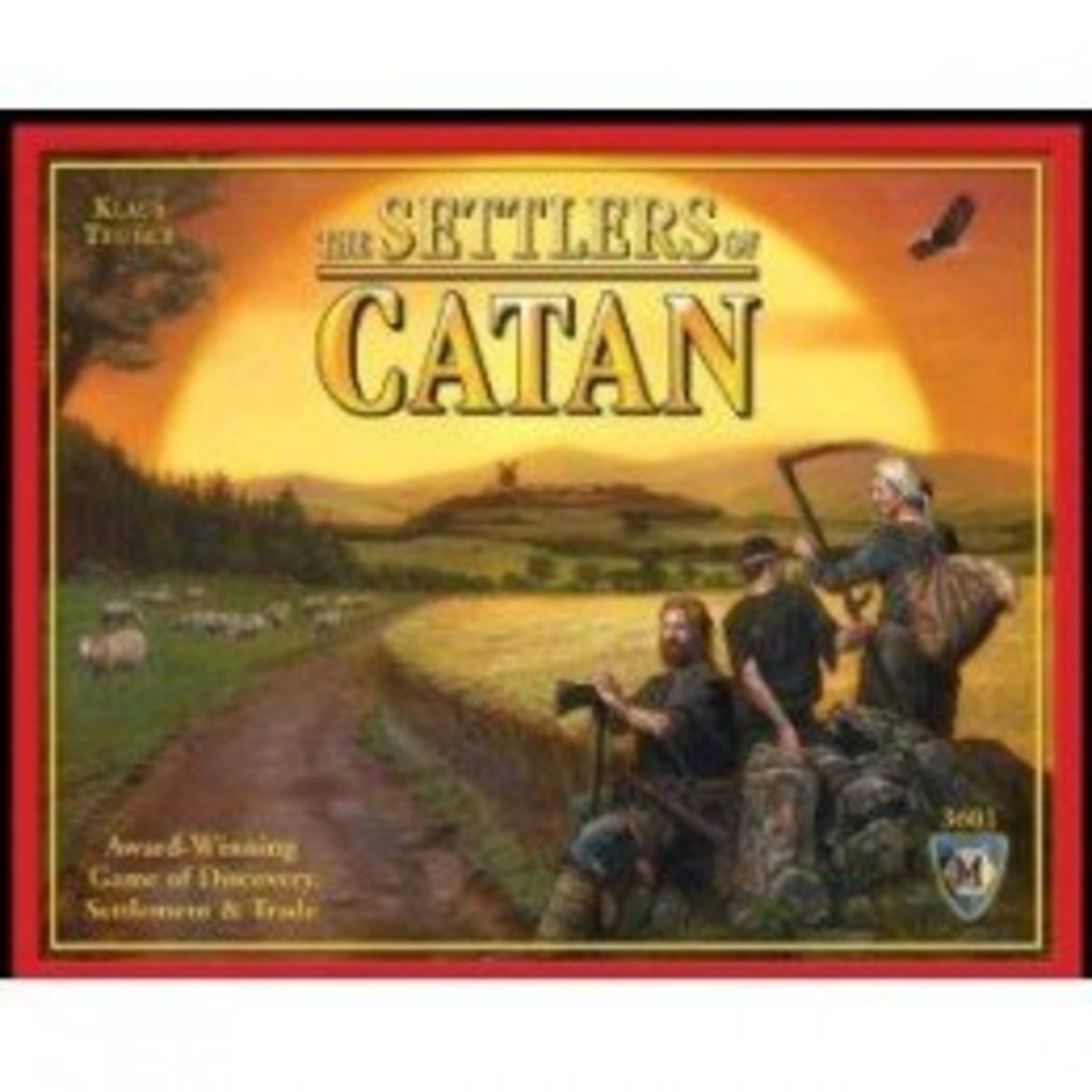Classic Childhood Board Games That Transcend Time
As a form of entertainment, playing games has been around in existence for many centuries. The very first record of gaming dates back to 3000BC with evidence found for the Royal Game of Ur. Also in that same century, Egyptians started playing Senet, and in the Sahara, people started playing a game similar to Mancala. Around 2000BC, Wei Qi was played in China, which later became known as Go in Japan.
Today, people of all ages play games to entertain themselves. Some even take on risks by playing for money when the games are played in a competitive light. There are so many types of games to play, from board and card games to computer and video games.
Some games have managed to transcend time ~ meaning ~ they have been around for a very long time and are passed on from generation to generation. Over the years, rather than getting rid of the games, newer versions are invented, extending the life of the game to interest current generations. Some games die off with generations for a variety of reasons. Others just seem to hold the interest of youth and adults alike, no matter the generation. Listed below are a few games that have managed to transcend time.
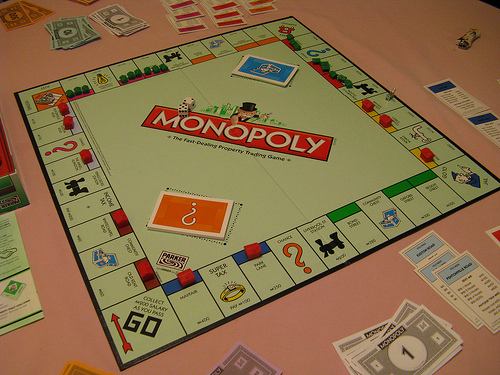
Monopoly
Monopoly is one of the most popular games for children of all ages (including adults) to play. It is based on a "business" concept where real estate developers buy properties and start to build their empire. Players use a token (dog, shoe, car, etc.) to venture around a square board that has the properties outlined around it. When others land on your property, they must pay "rent." Each player has the opportunity to build their empire by erecting homes and hotels on their properties, increasing the rent when others visit. There are also random things you must do, dictated by community cards that are drawn from two piles. They usually concern the paying of taxes or donating to some kind of charity. Some of the cards can also bring in money to the player for some of the good things that are done to contribute to the community. The purpose of the game is to own the board and push opponents into bankruptcy.
Currently, Monopoly is played around the world in 111 countries, and has been translated into 43 languages. There are now different variations of the game, ranging from a focus on sports teams and universities to cities and pets around the world.
Although there is still much controversy over where the game came from and who invented it, the earliest form was found in 1934 when Parker Brothers started selling Monopoly. Charles B. Darrow is often credited with Monopoly's invention, although previous forms of the game consisting of the real estate development concept dates back to 1883 when George S. Parker published a game called Banking. In 1904, Lizzie Magie invented a game called The Landlord's Game. Monopoly is the combination of these two early games.
Monopoly was first marketed in 1935. Since then, more than six billion little green houses and 2.25 billion little red hotels were produced for one billion players worldwide. Over 20 tokens, or pieces, have been cast since Monopoly's inception.
Between 1940 and 1960, Monopoly was known as America's #1 game. In the early 1950's, during this boom period, the main tokens changed from the lantern, purse, and rocking horse to the dog, horse and rider, and wheelbarrow.
Other factual tidbits include:
- 1972 ~ The Commissioner of Public Works in Atlantic City wanted to change the names of two streets, Baltic and Mediterranean Avenues. The public was enraged and demanded that the names remain the same in respect of Monopoly!
- 1978 ~ The Neiman Marcus Christmas catalog sold a version of the Monopoly game for chocolate lovers. Every piece, including the board, was made from chocolate.
- 1980's ~ The beginnings of the Monopoly Spin-Offs era when many entities, such as sports teams and universities, started making their own versions, replacing the names of the streets as well as the different community and chance card offerings.
- The longest game in Monopoly history was played for 70 straight days.
- Sidney Mobell, a San Francisco jeweler, produced the most expensive version of Monopoly. The set included a 23-carat gold board and diamond studded dice valued at $2 million.
- Every few years, there exists a Monopoly World Championship tournament where national champions from all over the world converge and play. Ten countries are usually represented in this tournament: United States, Singapore, New Zealand, Italy, Ireland, Japan, Hong Kong, Spain, Netherlands and the United Kingdom.
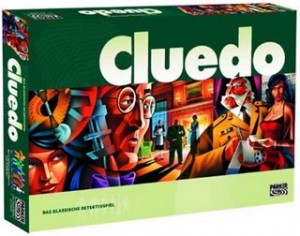
Clue
In 1944, Anthony E. Pratt invented the classic murder mystery game, called Cluedo, in England. Unbeknownst to his his neighbors, Pratt and his wife were specialists to gruesome murders and dark deeds. The overall concept of the game is related to some of the expertise that the Pratts brought forth from their backgrounds. Players of the game travel from room to room on the game board, asking questions to try to figure out who committed the murder and killed Mr. Boddy, along with finding out what weapon was used and the location of the incident.
After years of fine-tuning the concept, Pratt approached Waddington's Games in Leeds, England, to find out about manufacturing his game. Anthony Pratt also brought his idea to the patent office during that same year.
After Waddington's staff members played the game, they immediately recognized it as a winner with much potential. The game was finally launched in 1949. The game was first marketed in England under the original name, Cluedo. Later that year, Parker Brothers obtained the US rights to the game and named it Clue. In Brazil, the game is known as Detective.
This game of deductive reasoning hasn't changed much since its inception.
Some Clue tidbits of interest:
- Although the mystery of Mr. Boddy's murder has been solved by millions around the world, nobody has ever shared the reasons why Mr. Boddy was killed to begin with.
- Like Monopoly, there are many Clue spin-offs, including Hollywood and The Simpson's versions.
- There's even a Dungeons and Dragons version.
- In the 1990's, Scholastic, a US book publisher, sold a Clue Mystery Series, written for young readers.
- There are many video games versions of the game sold today.
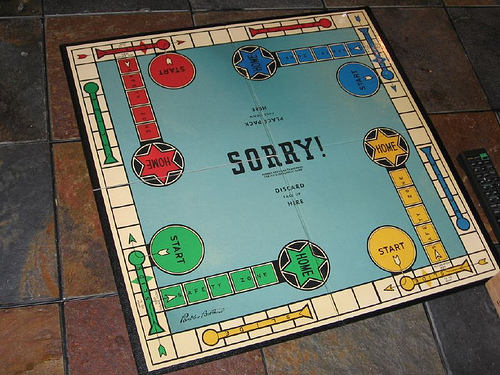
Sorry!
Back on September 12, 1929, a British gentleman named William Henry Storey, applied for a patent for Sorry! in the United Kingdom. The game he invented was a spin-off of Pachisi. By August 4th, 1930, Storey was able to also file for a patent for the game in the United States, and by 1933, the patent was granted. The US patent described the game as it is played today, with the four colored sections of the board. The first commercial version of the game was sold in 1934 by the UK's Waddington Games. Parker Brothers released the first US version of the game in 1939. Today, there are many versions of the game, including a Japanese one and another featuring SpongeBob SquarePants.
The purpose of the game is to get all your tokens, of the same color, to travel around the board and come "home" before any one else beats you to their base. The movement of the tokens or pawns is dictated by a stack of cards that might lead a person to travel backwards as well. If an opponent lands on the same space you are in, they get to kick your token back to where it started from. Believe it or not, this simple concept for a game has transcended time and children, today, continue to enjoy it.
A variety of Sorry! games have sprung up since its inception, including:
- Spongebob Squarepants Sorry!
- The Simpsons Sorry!
- Disney Sorry!
- Spiderman 3 Sorry!
- Pokémon Sorry!
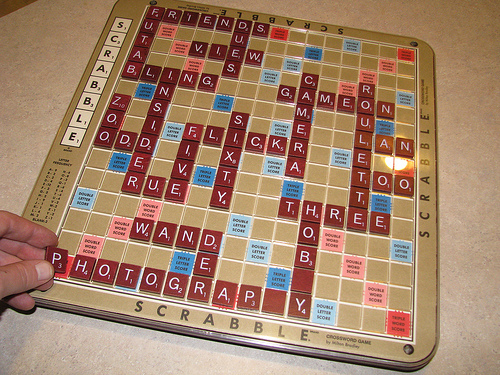
Scrabble
The game of Scrabble, a crossword-type game related to numbers, was invented by Alfred Mosher Butts. Mr. Butts was an out-of-work architect living in Poughkeepsie, NY, who decided to invent a game for fun. After making much observation of the games around him, Alfred Butts decided to invent a game that included all three categories of games he could find into one. Scrabble ended up being a combination of characteristics from, 1) number games, 2) move games, and 3) word games.
Butts ended up spending a significant amount of time figuring out how many points to assign each letter. He started off analyzing the front page of many New York Times papers, figuring out how many times each letter occurred. He then assigned the point values based on his findings. Butts then named his game Lexiko or Criss Cross Words.
After several major game developers turned down his idea, Butts joined forces with James Brunot, a gaming entrepreneur, who suggested some refinements regarding the rules and design, as well as helping develop the name, Scrabble. In 1948, the game was trademarked as Scrabble and was produced in an old, abandoned schoolhouse where Brunot solicited his friends to manufacture the game. Initially, they turned out 12 games in an hour, stamping letters on wooden tiles one at a time.
Nobody knew that a game with the simple concept of drawing little lettered tiles, making words out of them and placing them on a board for points, would transcend time...especially when so many gaming companies turned down the idea at the beginning.
Some Scrabble tidbits of interest include:
- The first four years of production, the Brunots manufactured 2,400 sets and lost $450 dollars overall.
- In the early 1950's, the president of Macy's discovered and fell in love with the game. Consequently, he ordered the game for his store and his actions became the launching point of Scrabble.
- By 1952, Brunot realized that they could no longer keep up with the demand by manufacturing the game by hand. Brunot contracted with Selchow & Righter Company, which started to market and distribute the game in the US and Canada.
- 1972 ~ Selchow & Righter Company purchased the trademark from the Brunots.
Like many of the games that have transcended time, there are now a variety of Scrabble games, ranging from a junior edition to electronic versions. There are also national championship tournaments played around the world.
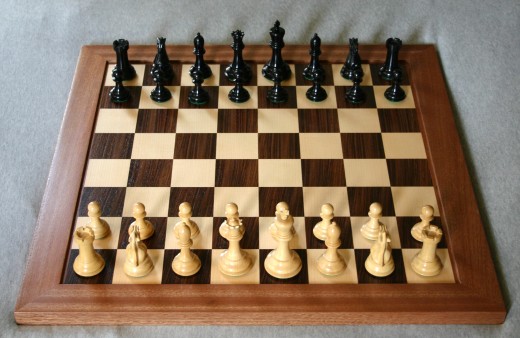
Chess
The strategic game of chess is considered one of the oldest skill game in the world. The game reflects the medieval times, with castles (rooks) and horses (knights) and royalty. The purpose of the game is to try to kill the opponent's king by traveling around the board. Each piece, of which there are six types, can only move a certain way on the board. There is a certain way to set up the pieces on the eight by eight squared board. Following these guidelines, two opponents played each other, trying to take over the other person's kingdom.
Nobody really knows the origins of chess as it was played in China, India, and Persia. During the 8th Century, the Moors invaded Persia and the soldiers picked up on the game. When the Moors went on to invade Spain, the game was passed on to the Spaniards, who spread the concept around Europe. The pieces we know of today were named by the Europeans and definitely related to the medieval times.
Pawns
Serfs, also known as the laborers, lived during the Middle Ages and served landowners. Serfs were definitely the hard workers who were often sacrificed for the good of their owners. Life was brutal for serfs and many of them worked hard and died young. There was no protection for serfs during wars and they were often killed to protect their owners. Pawns on a chess board represent these laborers.
There are more pawns than any other pieces in the chess game, however, they have the most limiting move capabilities. The pawn's first move can bring them two squares away, however, they can only travel straight forward on the board. After the first move, they are restricted to moving one square at a time. They eliminate opponents diagonally, again, moving one row forward at a time. Pawns are also the only pieces that cannot travel backwards. All the other pieces on the board can go back and forth.
Castle or Rook
The rook represents the home and the two pieces are placed as bookends on the board, protecting the exterior walls, per se. These castle pieces are able to move as many spaces as the board allows, as long as the paths are vertical or horizontal. Rooks never move diagonally. They eliminate other pieces by running into them head-on.
Horse or Knight
The knight on a chessboard represents the soldiers of the Middle Ages. It was their job to protect persons of rank. They tend to be of lesser rank than the bishops, king, and queen, but have the most interesting moves. They move in an L-shape, with the longer side taking up two squares and the short side taking up one. There are two knights per opponent on the board, placed next to the two exterior rooks.
Bishop
The bishop represents the church, which was a rich and mighty force in the medieval times. Back then, religion played a huge role in everyday life. The bishops, of which there are two, stand next to the knights and are the closest pieces to the king and queen. Bishops travel only in diagonals, which make them the total opposite of the rooks.
Queen
The only female character on the board, the queen is the most powerful. It can move in all directions, back and forth around the board. There is only one queen, as you would expect. During the middle ages, queens were actually advisers to their kings. Although she held more power than the king, at times, queens were also subjected to a lot of abuse. If the kings didn't like their queens, they could behead them or exile them forever. On the chess board, queens are the biggest protector of the king, as well as a real trooper for killing off enemy pieces.
King
The sought-after king on the chess board is the tallest piece and is well defended just like during the Middle Ages. The surrender of the king would mean a loss of the kingdom to opposing armies. It was the duty of all the people in the kingdom to keep the King safe, which are the roles on the chess board. Although the king is the most important piece on the board, he is also the least mobile. The king can travel in all directions, but only one square at a time.
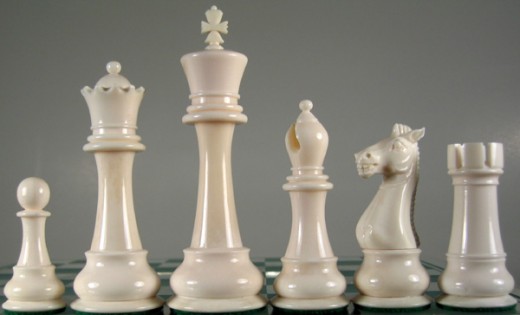
Chess is a game that is played around the world and by gamers of all ages. There are very intense competitions that are played, featuring some of the top international players. The first international chess tournament was in England, in 1851 and was
won by Adolf Anderssen of Germany. In 1917, Russians established the first Chess Schools where youngsters attended for the sole purpose of getting better at chess. Since the late 1920's most of the chess champions have hailed from Russia.

Games, Games, Games
Although this list of past times only scratches the surface of games that transcend time, these are the ones that are most likely found in an average home around the world. Despite the technically advanced world we live in where electronic games have taken over, with Nintendo Wii, Xbox, and Playstation, many homes still have a stack of old-time board games. These are games that will never go away...played generation, after generation, after generation.


